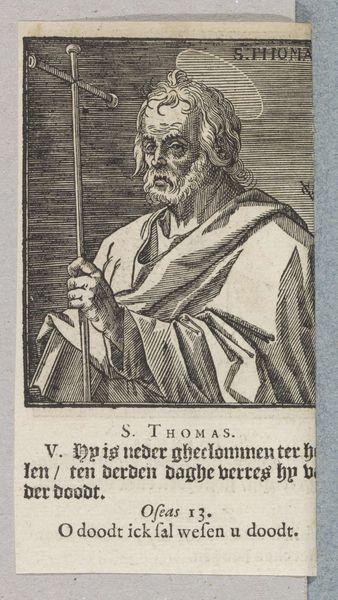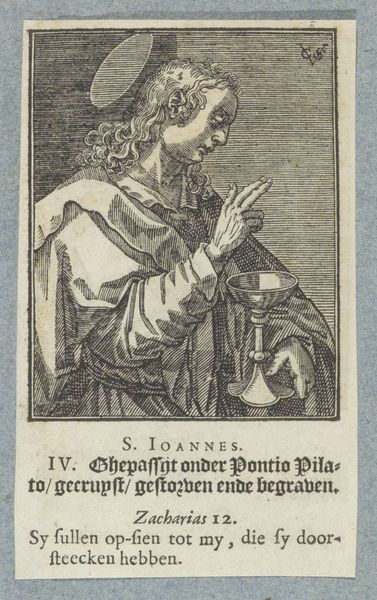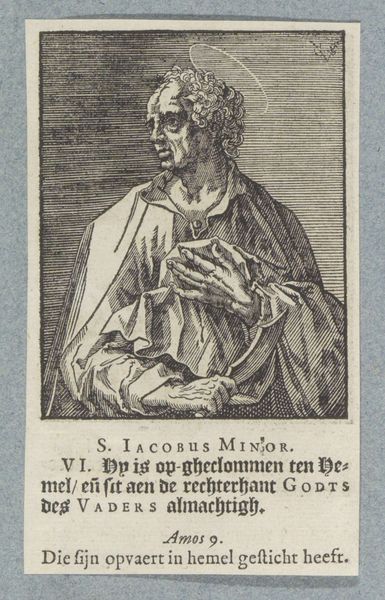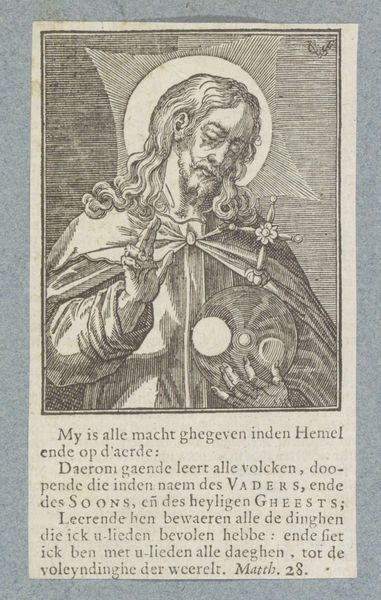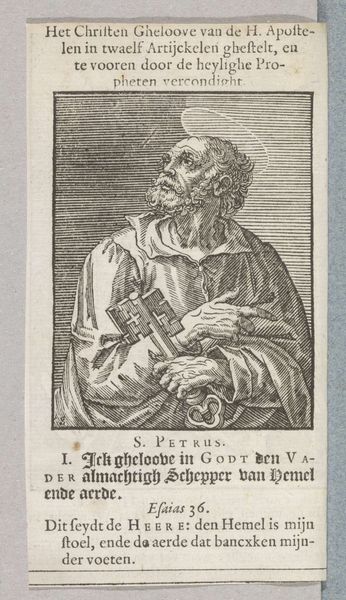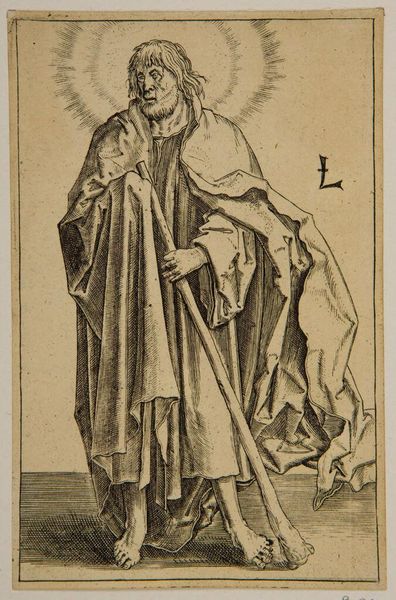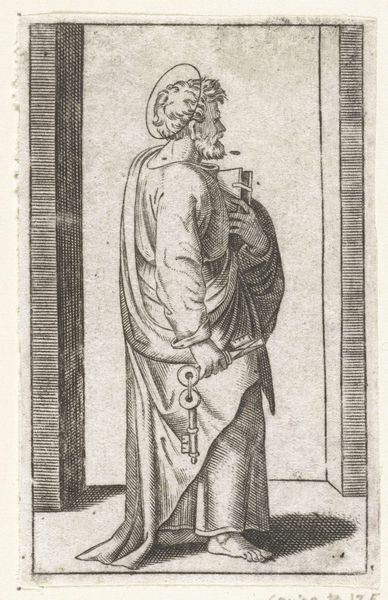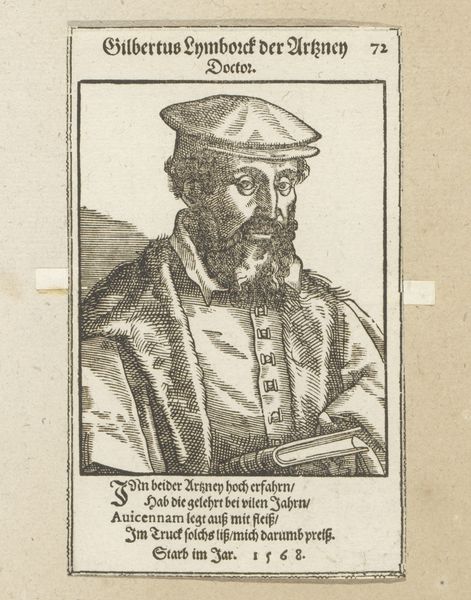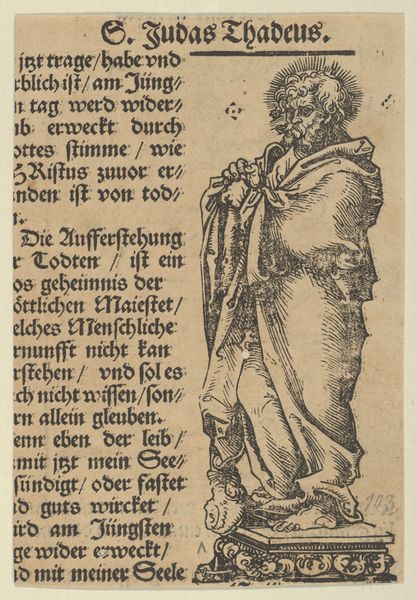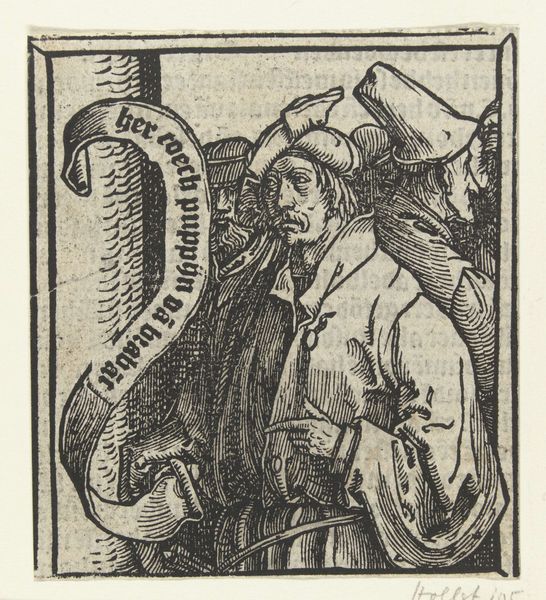
print, engraving
#
portrait
#
medieval
#
baroque
# print
#
figuration
#
line
#
engraving
Dimensions: height 76 mm, width 65 mm, height 110 mm, width 80 mm
Copyright: Rijks Museum: Open Domain
Curator: This is "Apostel Judas Thaddäus," made before 1646 by Christoffel van (II) Sichem, currently residing here at the Rijksmuseum. It's an engraving, a print showcasing a standing figure. My initial impression is its striking starkness – the contrasting lines really draw your eye. Editor: My first thought? Authority, and perhaps, weariness. He looks like a man who has seen a lot, holding a book as a symbol of faith, leaning on a staff for support. The lines forming his face tell a story of hardship, reflecting on the complicated role religion has played in different people's lives across the centuries. Curator: Right. What fascinates me are the lines themselves. Notice the variation in thickness and density—it's all carefully calibrated to suggest form and texture, and its mode of production points towards printmaking as a form of democratized imagery for broad consumption. The physicality of the plate, the ink, and the paper: each step is critical to the final object. Editor: Absolutely. And consider Judas Thaddeus's representation – not as an ethereal being, but a weathered man, close to the earth. What sociopolitical narratives do these engravings allow into circulation during this period, specifically around faith, community, and power? Curator: Precisely. Also the specific ways in which the plate itself degrades or is altered between printings. The small imperfections are telling. They’re not just copies; they’re unique material manifestations. Editor: Thinking about materiality also highlights how these religious figures, replicated and circulated, may become interwoven with other complex issues concerning cultural identities, class structures and so forth in early modern European history. It reveals much about the ways images operated. Curator: Ultimately, a testament to the power of accessible art, reflecting both skilled craftsmanship and cultural dissemination. Editor: An accessible format that leaves room for considering those excluded from religious canon.
Comments
No comments
Be the first to comment and join the conversation on the ultimate creative platform.

